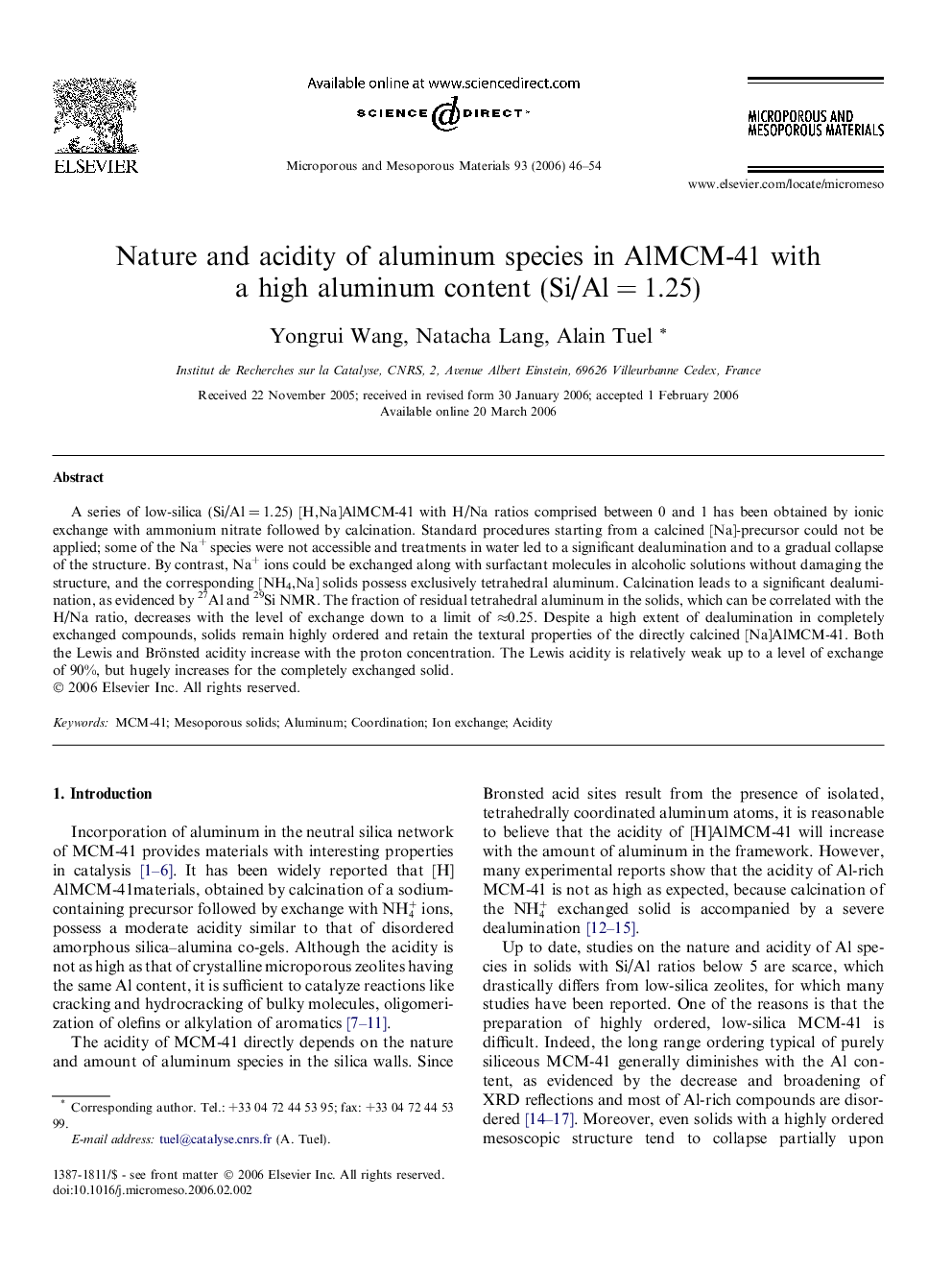| Article ID | Journal | Published Year | Pages | File Type |
|---|---|---|---|---|
| 76850 | Microporous and Mesoporous Materials | 2006 | 9 Pages |
A series of low-silica (Si/Al = 1.25) [H,Na]AlMCM-41 with H/Na ratios comprised between 0 and 1 has been obtained by ionic exchange with ammonium nitrate followed by calcination. Standard procedures starting from a calcined [Na]-precursor could not be applied; some of the Na+ species were not accessible and treatments in water led to a significant dealumination and to a gradual collapse of the structure. By contrast, Na+ ions could be exchanged along with surfactant molecules in alcoholic solutions without damaging the structure, and the corresponding [NH4,Na] solids possess exclusively tetrahedral aluminum. Calcination leads to a significant dealumination, as evidenced by 27Al and 29Si NMR. The fraction of residual tetrahedral aluminum in the solids, which can be correlated with the H/Na ratio, decreases with the level of exchange down to a limit of ≈0.25. Despite a high extent of dealumination in completely exchanged compounds, solids remain highly ordered and retain the textural properties of the directly calcined [Na]AlMCM-41. Both the Lewis and Brönsted acidity increase with the proton concentration. The Lewis acidity is relatively weak up to a level of exchange of 90%, but hugely increases for the completely exchanged solid.
